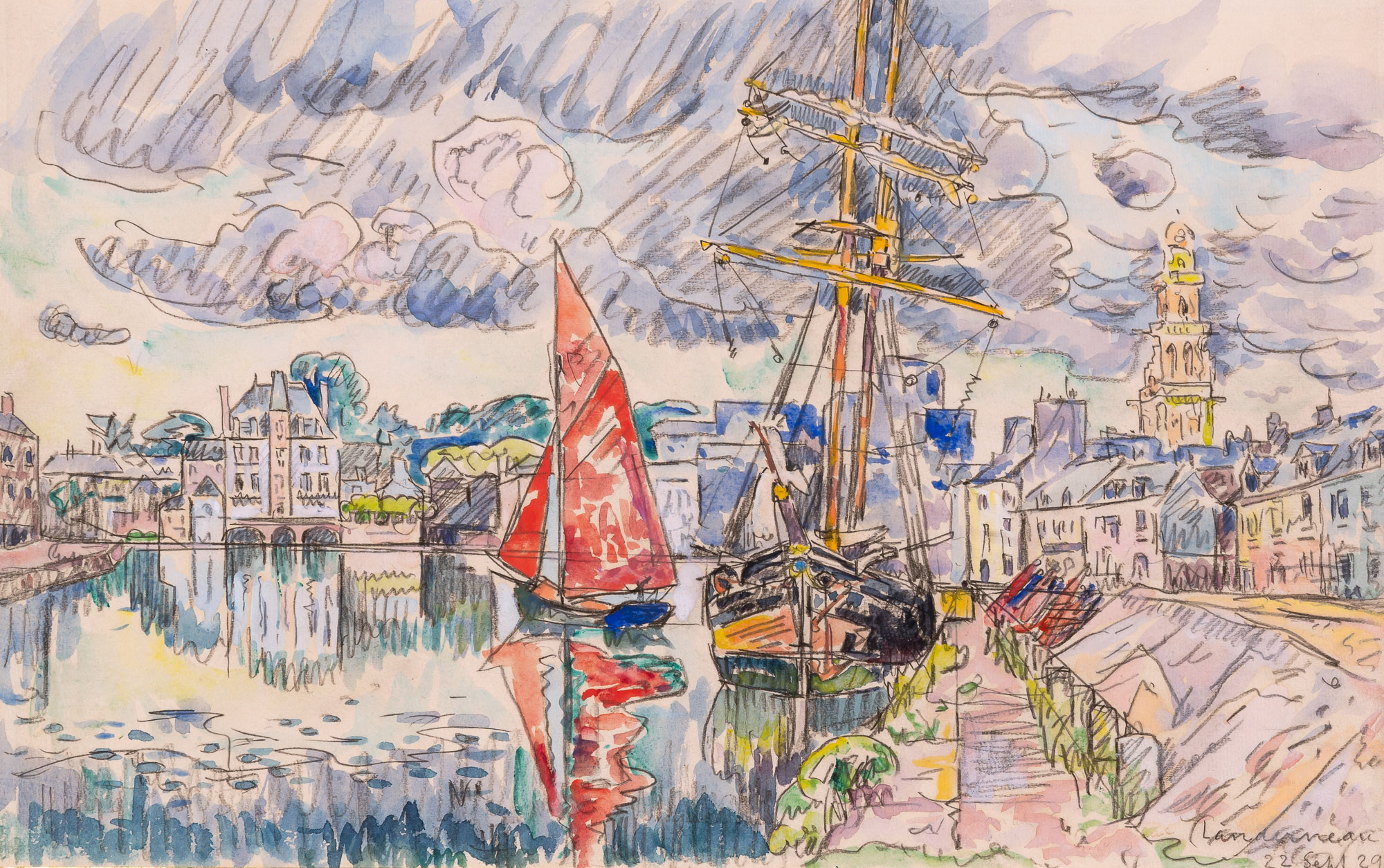
Paul Signac
French, 1863-1935
The French artist Paul Signac was a Neo‑Impressionist painter known for his innovative use of color and his role in the development of pointillism. Born in Paris, Signac abandoned an early interest in architecture to pursue painting full‑time after visiting a Claude Monet exhibition in 1880.
In the mid-1880s, he met Georges Seurat, with whom he co-developed the technique of pointillism—a method of applying small, distinct dots of color that blend optically from a distance. This breakthrough not only shaped Signac’s own style but also helped define the broader Neo‑Impressionist movement.
A dedicated student of color theory and optics, Signac brought scientific rigor to his compositions while maintaining his connection to nature. He favored outdoor scenes, particularly maritime subjects, and painted extensively along the French coast, especially in Saint‑Tropez, where he eventually settled. An avid sailor himself, Signac traveled widely along European coasts and often painted port scenes and harbor views from firsthand observation. After Seurat’s death in 1891, Signac became one of the principal voices of Neo‑Impressionism and served as president of the Société des Artistes Indépendants, promoting new generations of color‑theory–based art.
Beyond his own work, Signac was a key advocate for modern art in France, promoting divisionism and influencing a generation of younger painters. His paintings remain celebrated for their clarity, color harmony, and structure.